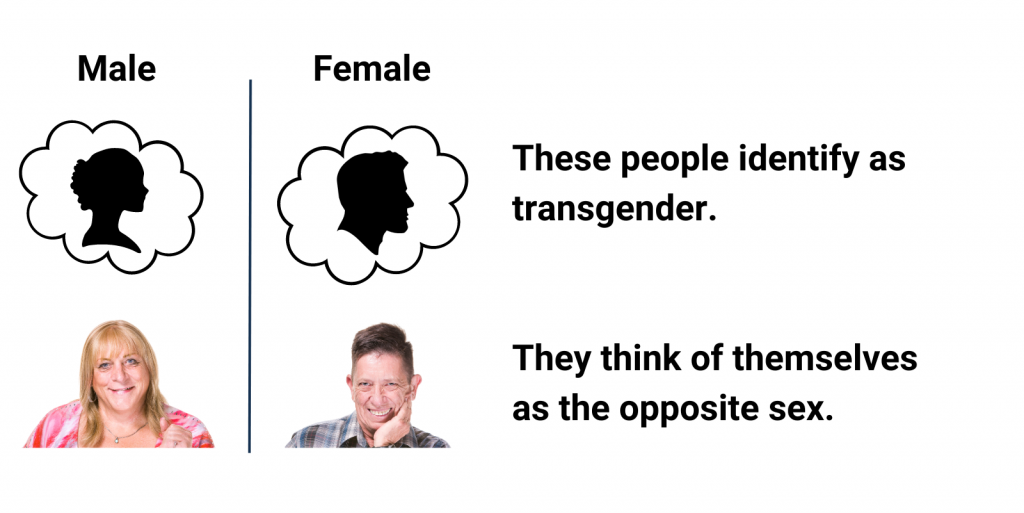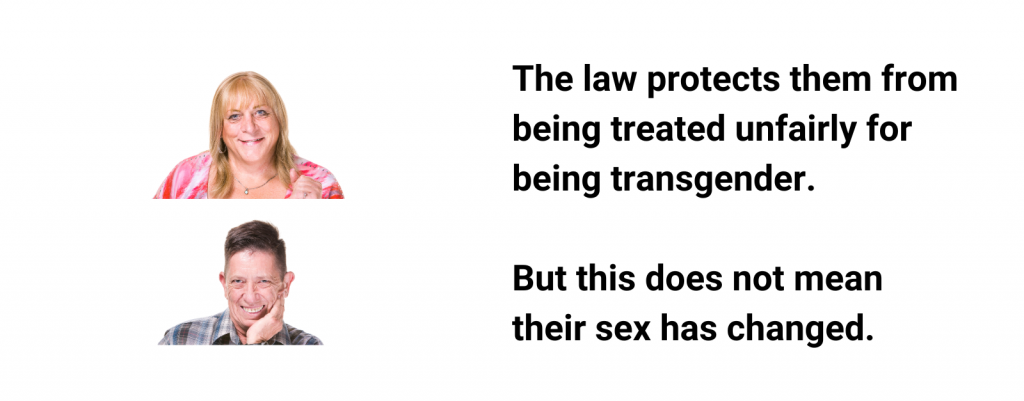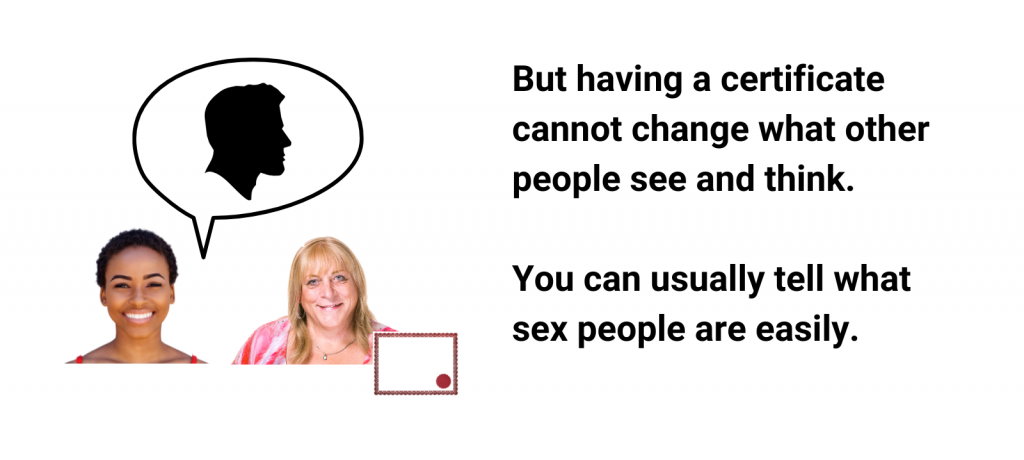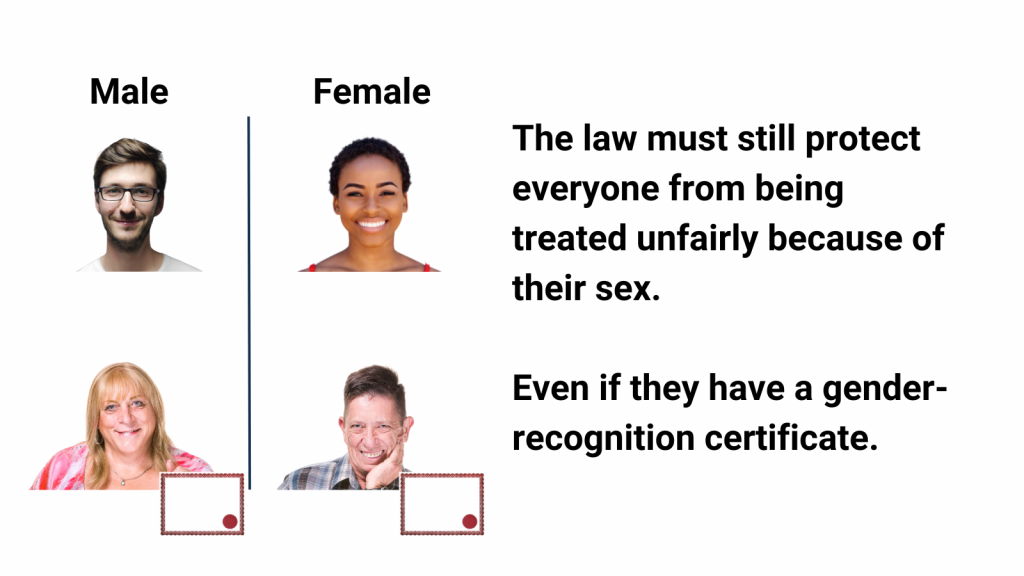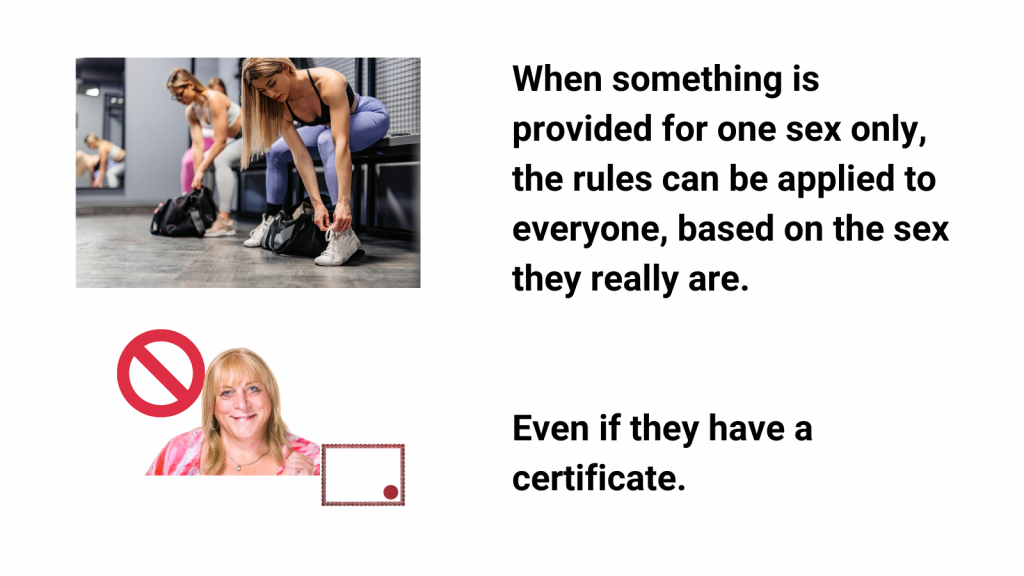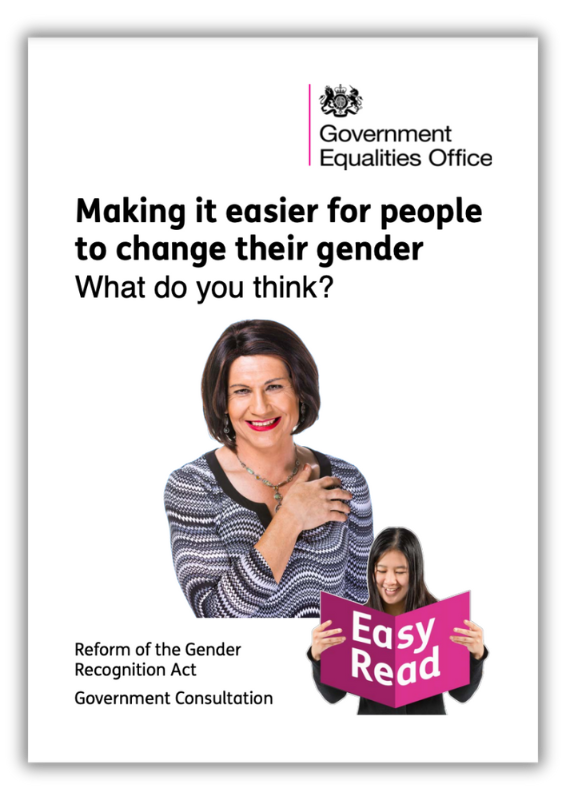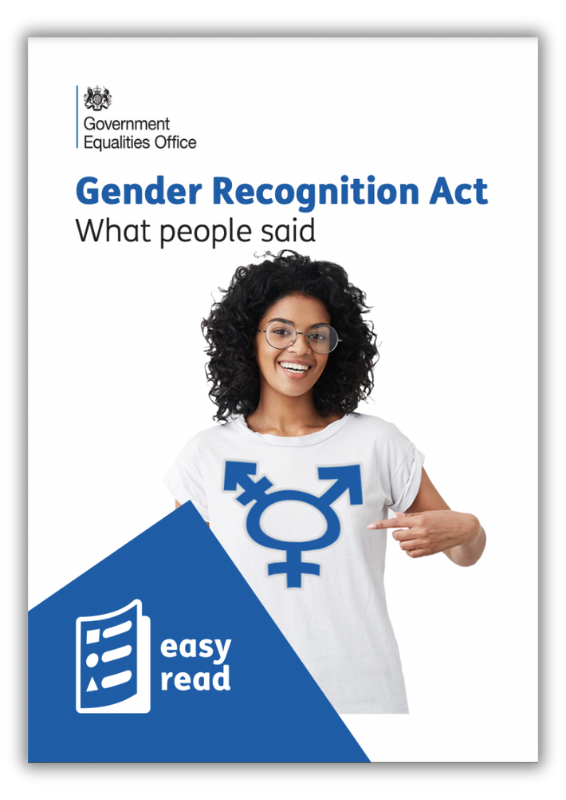Make the Equality Act clear: easy-read version
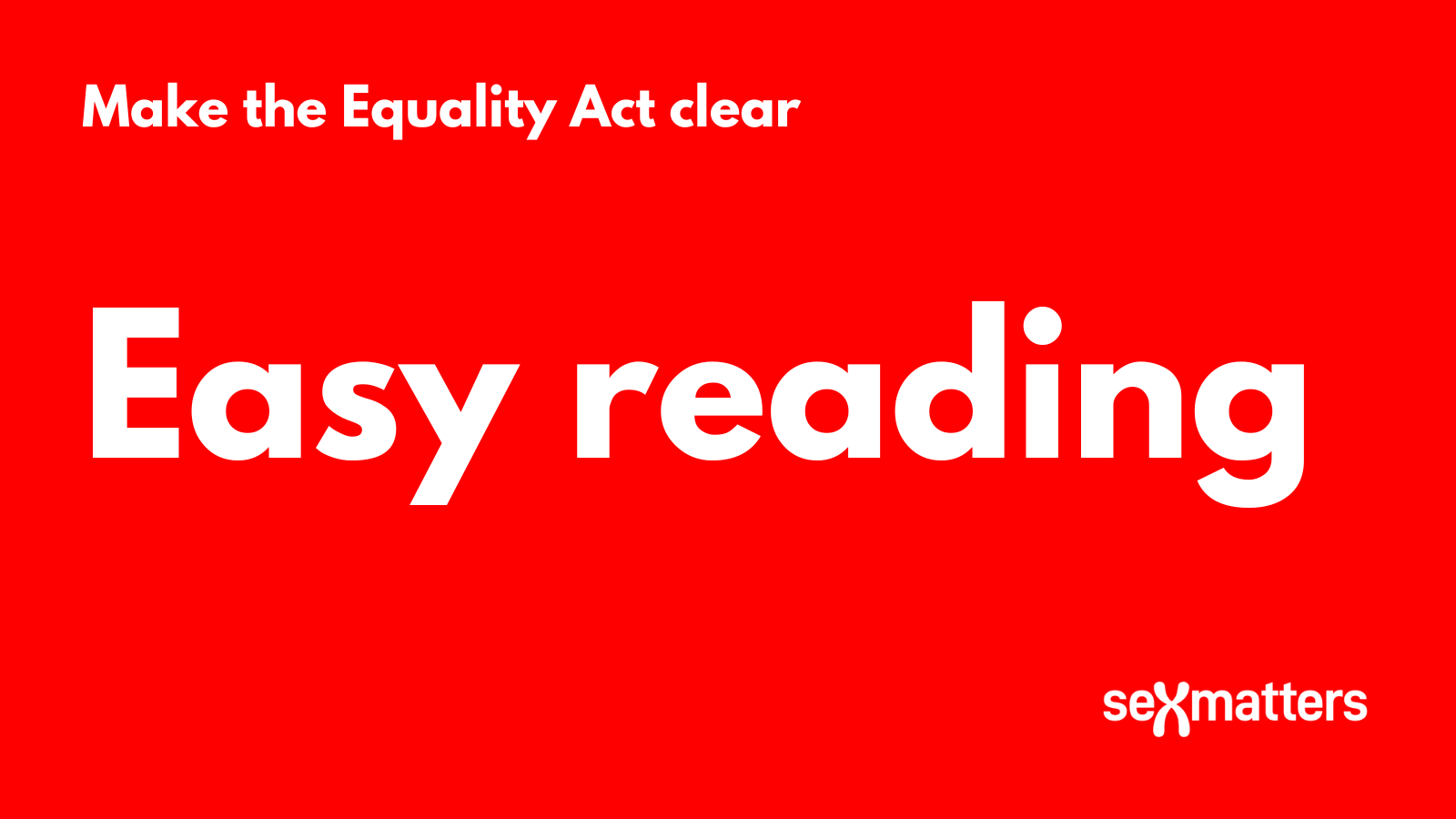
This is the seventh in a series of blog posts in the run up to the debate on 12th June about clarifying the Equality Act.
When governments consult on major legal changes or produce guidance on laws, they often produce easy-read versions. These use simple words and pictures to explain the law. For example:
The way the Equality Act defines sex, and the rules around single-sex services, should be clear and simple.
For example, everyone should be able to understand what this sign means:
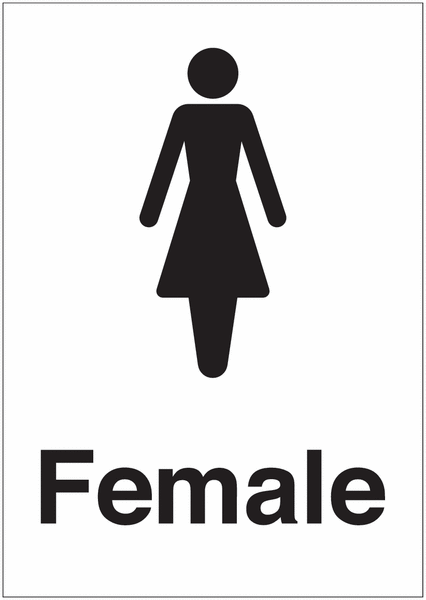
The government’s easy-read pictures show why there is a problem with the Gender Recognition Act and the Equality Act.
This is what the government said in its consultation in 2018:

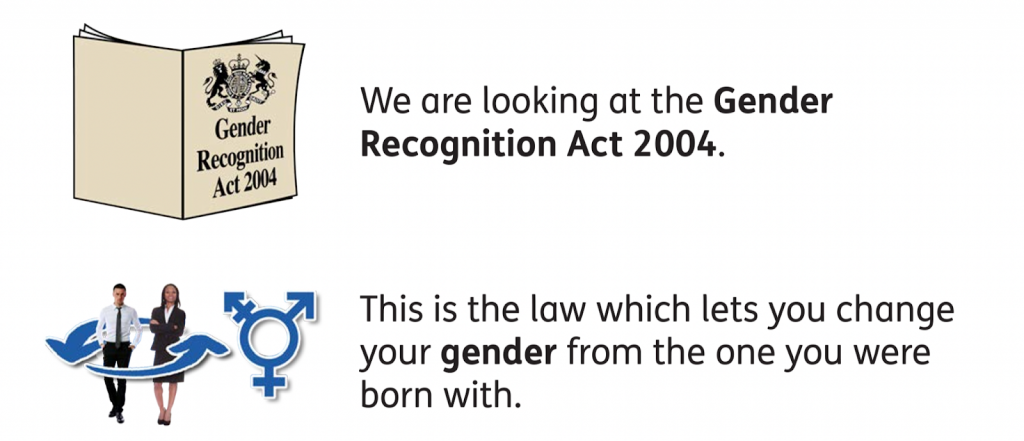
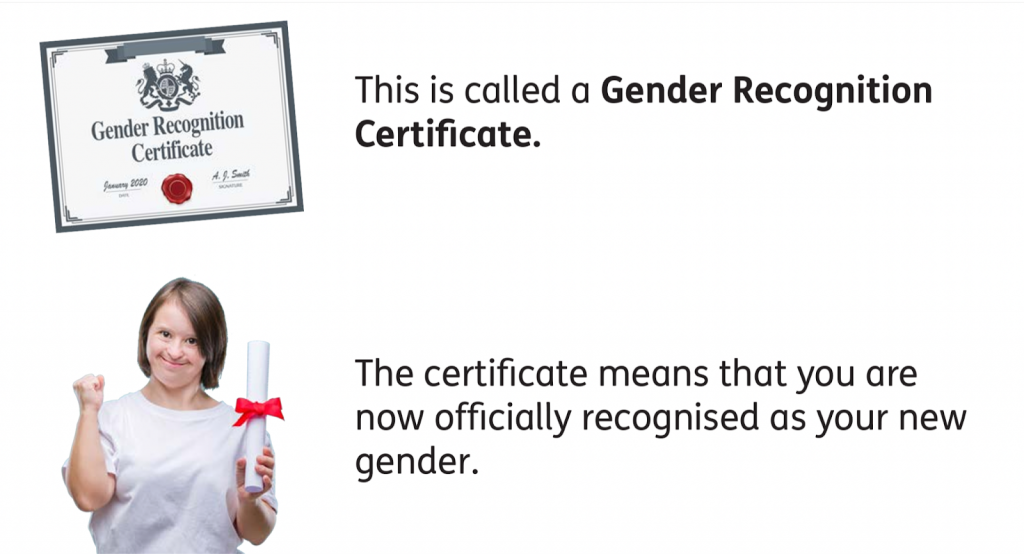
These pictures make no sense because everyone can tell what sex the people are in them. Having a certificate cannot really change whether someone is male or female.

Make the Equality Act clear: easy-read version
This is the easy-read version of how we think the Equality Act should be made clear:



